How did people with disabilities live in medieval Europe
Categories: History
By Pictolic https://pictolic.com/article/how-did-people-with-disabilities-live-in-medieval-europe.htmlNowadays, disability implies a whole range of medical, legal and social factors. The observance of the rights of people with disabilities is monitored, although not all countries have succeeded in this. And how were things with the disabled in Europe in the Middle Ages? Neither pensions nor social protection were invented at that time. Did everyone find themselves on the porch, on the sidelines of life?

Historians have a separate specialization that studies the life of disabled people in medieval society. This branch is called Medieval disability studies or the study of medieval disability. Historian Natalia Poleznova, who works in this direction, spoke about how the disabled adapted to the difficult medieval life even for healthy people.
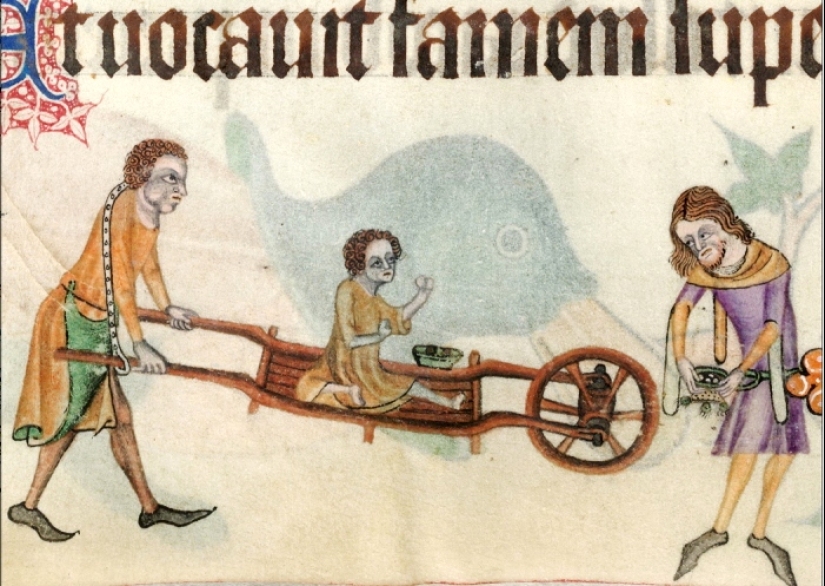
Centuries ago, there was no concept of "disability". Usually they were guided by the condition of a particular person — how much he is able to do this or that job, whether he can get his own food and move freely. External manifestations of disability played an important role.
Another thing was also taken into account — how serious the problem was from one point of view or another. For example, in an aristocratic family, a hunchback girl was a big problem. Nobles often used marriages to intermarry with other families. To marry a girl with a physical disability, even with a good dowry, was incredibly difficult.
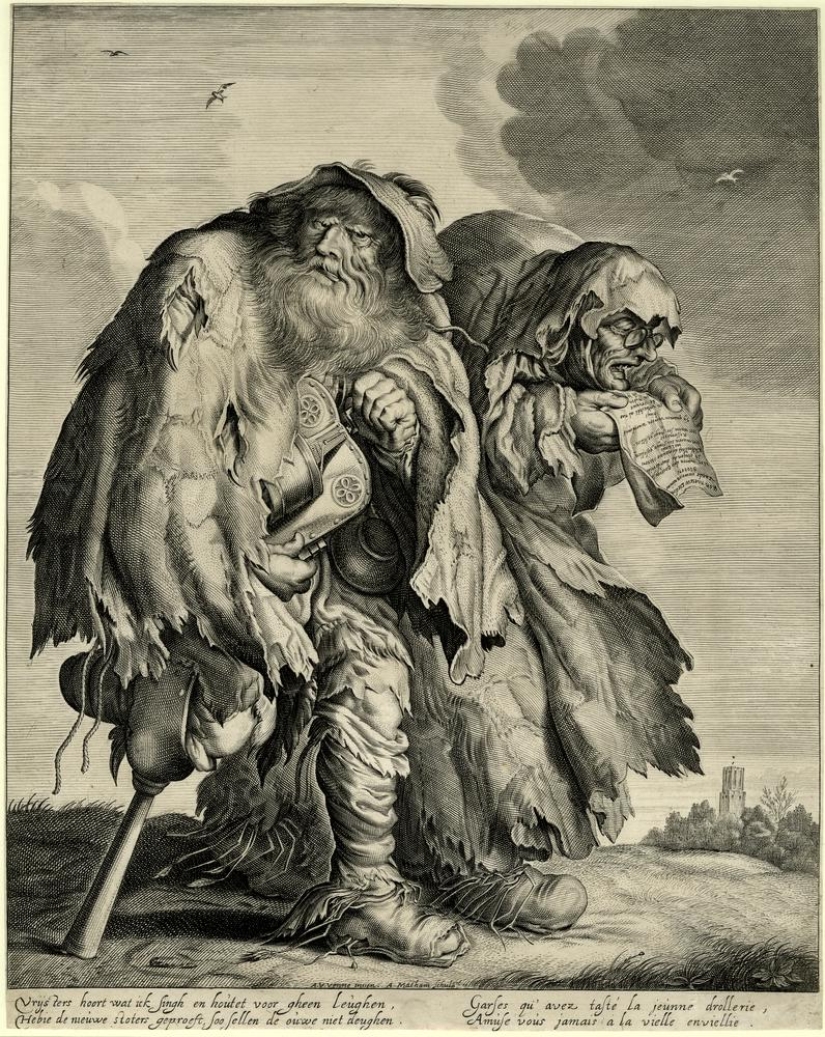
But in the peasant environment, this was treated more simply. Much more than external beauty, hard work and a docile disposition were appreciated by the people. If a hump or other defect did not interfere with working and having children, then it was not critical. So, we can say that in the Middle Ages, ideas about disability were very vague.
Chances of becoming disabled in The Middle Ages were much bigger than they are now. Someone was born with a deficiency, someone acquired it during childbirth from a midwife, and someone in childhood, having been ill with one of the many dangerous ailments. Those who retained their health until adulthood could lose it during the wars, which practically did not stop.
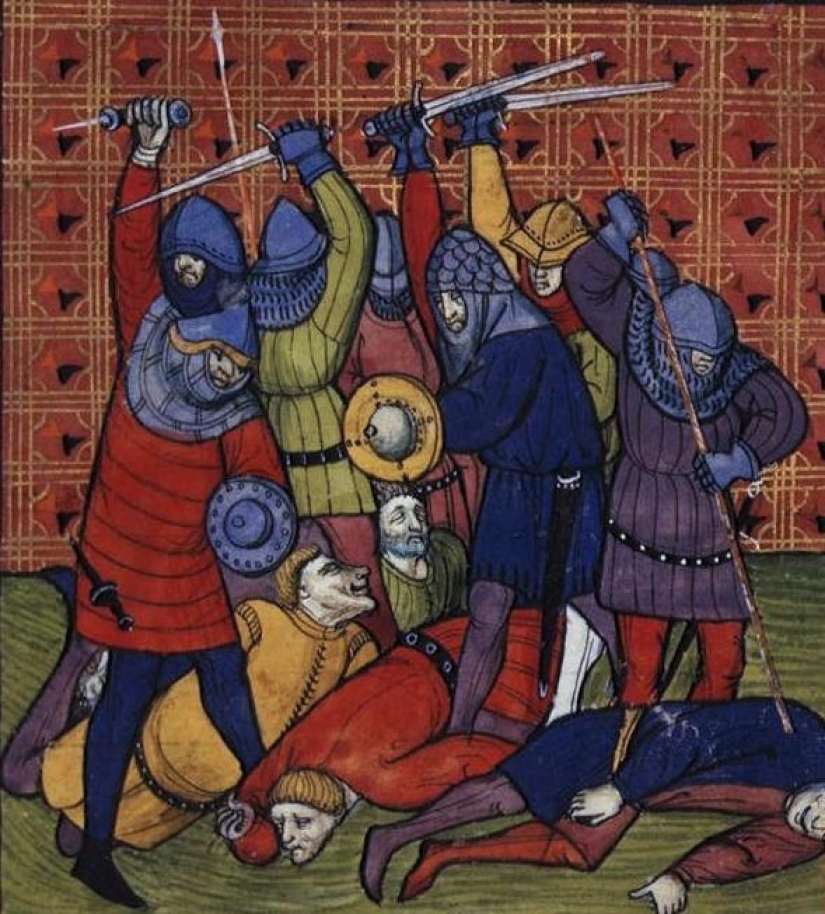
In order to become a cripple, it was not even necessary to participate in battles. Often the victors inflicted injuries on civilians of the defeated side. Amputations of limbs, castration, cutting off of ears, noses and tongue were common. But most often deprived of sight.
In the 12th century , the French knight Count Simon IV de Montfort, who led the Crusade against the Albigenses, stormed the settlement of Bran. For the fact that its inhabitants gave shelter to heretics-Cathars, the commander ordered to blind and deprive the noses of all men. Only one resident of Bran was left with an eye so that he could go and tell everyone about the fate of his countrymen.
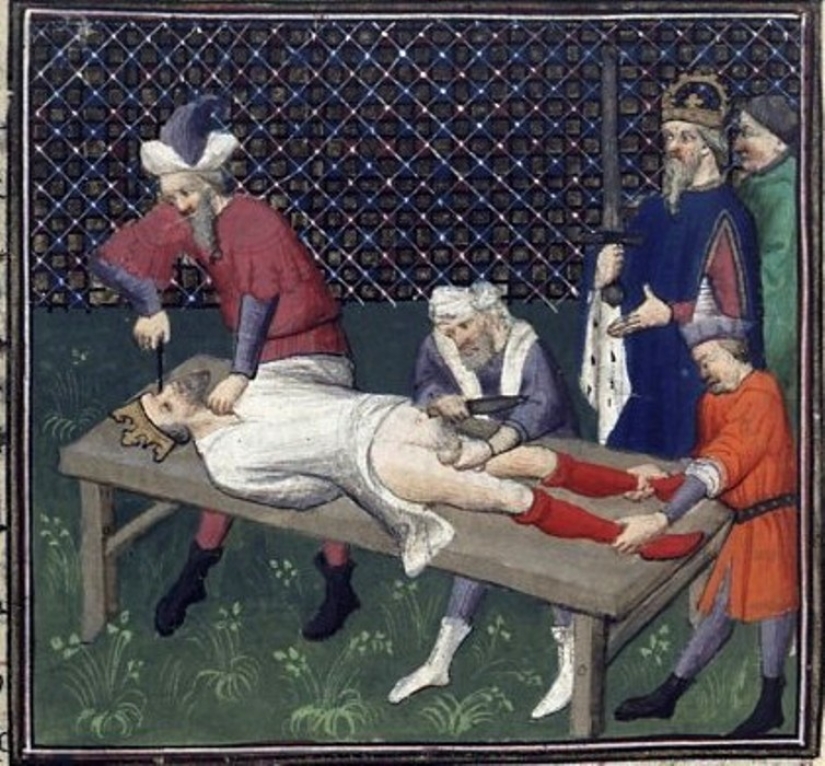
It was often not the enemies who inflicted injuries, but their own sovereigns and lords. Thieves and swindlers were punished by cutting off their hands and feet. The punishment was not intended to hurt a person. It was supposed to complicate his life as much as possible, and also deprive him of the opportunity to continue committing crimes. It was not easy for a person marked with a disability to engage in theft. At the sight of his injury, most immediately wondered if he had been disfigured for theft.
Just as in our days, disability could be obtained at work. Often the employer took care of the fate of an employee who was seriously injured at work. The Lombard edict, adopted under King Rotary in the seventh century, provided for this. It ordered employers to pay compensation to injured masons. In the late Middle Ages, guilds took care of those who lost their ability to work.
It seems that in the Middle Ages, a person with disabilities was doomed to loneliness and poverty. Nothing like that. It was possible to lose a position in society after the loss of health only under an unfavorable combination of several circumstances.
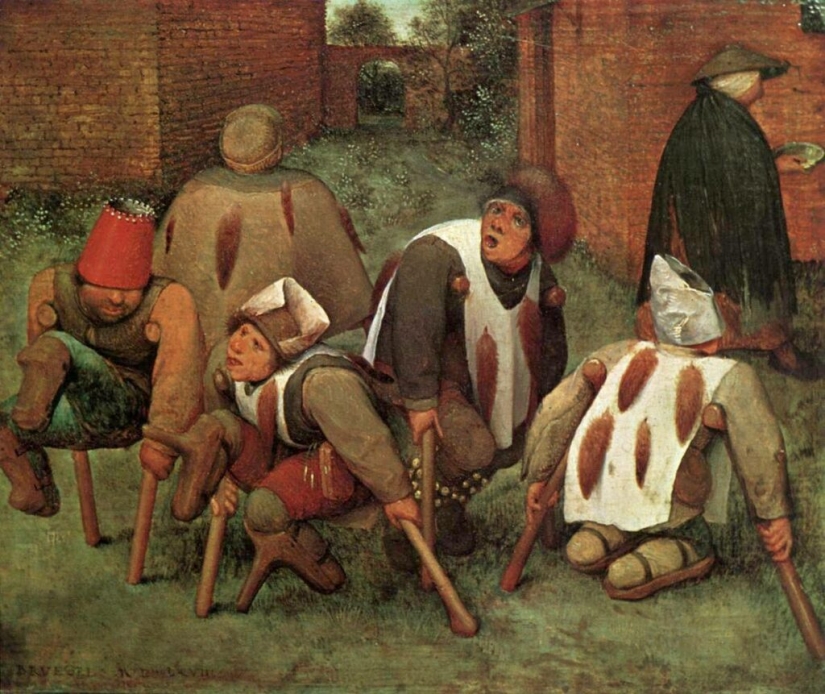
Most often, having received a disability, a person remained in his usual circle. Disabled people lived in a family, performed work that was within their power and participated in public life. Those who had a physical disability, lost their family and the opportunity to bring any benefit to society could become poor cripples. Significantly increased the chance of a hopeless existence for those who have never been in guilds and other associations.
But even the poor guy, from whom everyone turned away, had a small chance for a roof over his head and a piece of bread. The poor were sometimes taken in by monasteries. Unfortunately, there were very few such monasteries where cripples were taken for the maintenance of Christ for the sake of the cripples. But even being in such a place, a disabled person could not count on guaranteed care and a well-fed life.
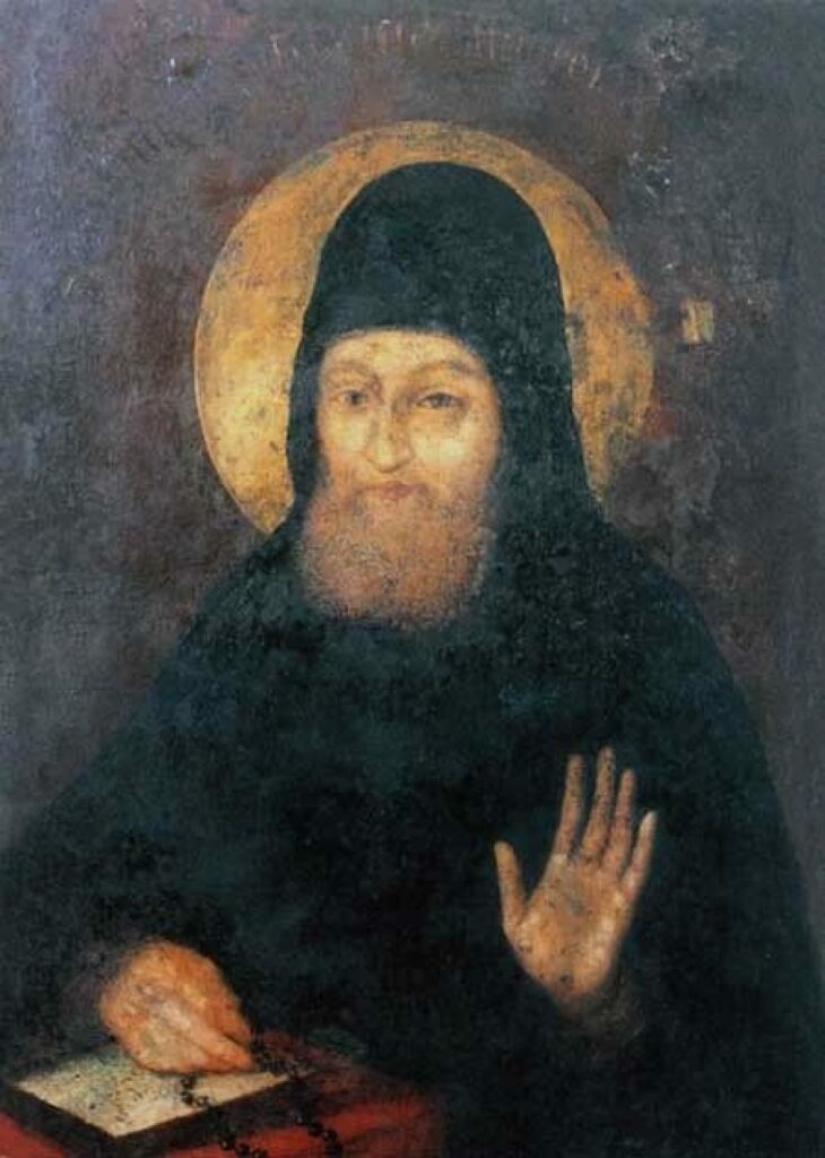
As an example , we can cite the case of St. Pimen the Many - sided from Kiev, who lived in the 12th century. Born with many ailments, he miraculously survived and settled in his youth in Kiev-Pechersk Monastery. History is silent about what Pimen suffered, but it is known that he was bedridden.
Pimen was constantly in his cell and several monks were assigned to take care of him. But they performed their duties poorly and often forgot to feed, water and wash the disabled person. He stoically waited until he was remembered, sometimes for 2-3 days. This story ended safely and very edifying.

The most negligent "nurse" of the unfortunate Pimen suddenly came down with a strong fever. The Kiev-Pechersk paterik tells about it like this:
But no matter how much the patient was watered, he could not quench his thirst. Then the monk realized that this was his punishment for his attitude towards Pimen and repented. He was immediately forgiven and instantly healed. After that, the disabled monk was never forgotten again.
Pimen Mnogobolezny came to the monastery in his youth and did not leave its walls until his death. But many medieval invalids willingly traveled. They traveled great distances not only for the sake of collecting alms. Often they were driven to the campaign by the hope of healing, fueled by numerous biblical stories and rumors.
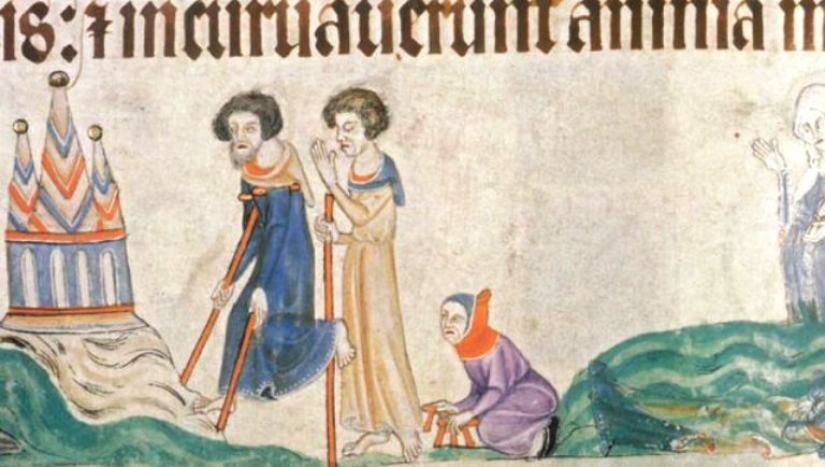
The most desirable place for any medieval cripple was the shrines in Jerusalem. It was believed that, having attached themselves to the relics of the Holy Land, patients instantly recover. But Palestine was too far away, so, in most cases, they were content with visits to European shrines.
In the Middle Ages, traveling was a difficult and dangerous business. And it was especially difficult for the disabled. Those who had problems with their legs had to move on crutches. These simple devices at that time almost did not differ from modern ones, except that they were rougher and heavier.
In general, adaptation of people with disabilities was almost absent at that time. Rich disabled people could afford something really effective. History has preserved information about the wheelchair of Pope Honorius IV. He took the throne in 1285 and suffered from severe gout until the end of his days.
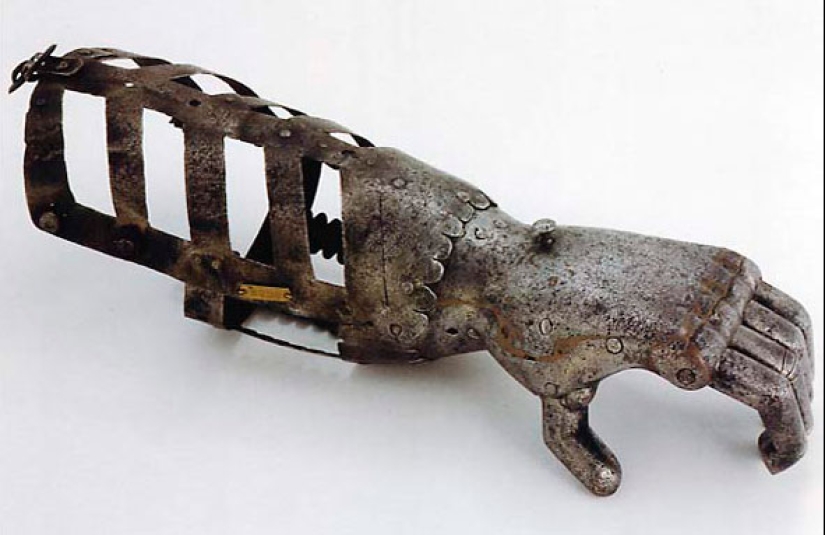
The chronicles of the Vatican preserved information not only about the pontiff's chair. There is also information about the cunning mechanisms that helped the almost paralyzed Honorius IV to raise his hands with the communion cup during the service. Of course, only a very rich disabled person could afford such things.
There were also prostheses in those days. During excavations, archaeologists often find artificial arms and legs fastened with belts. There were also special prostheses that helped to perform different types of work. Prosthetic hands with hooks and even knives, which performed not cosmetic, but practical functions, are well known.
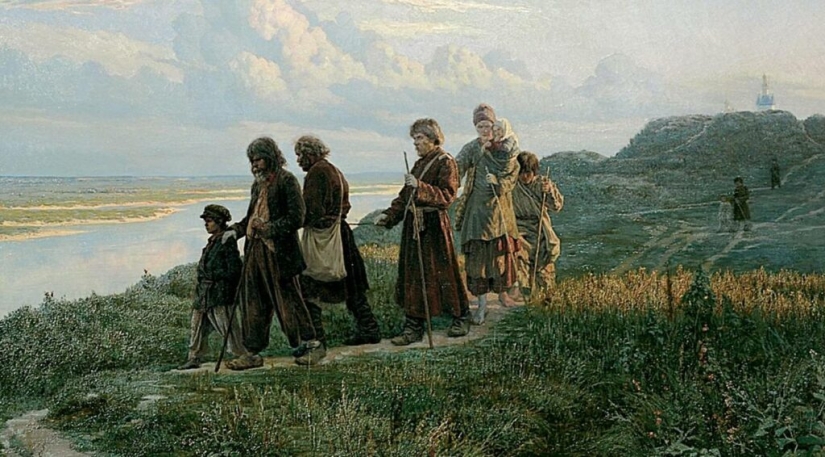
Blind people were sometimes accompanied by guides. They were children or trained dogs. But not everyone could afford such a decision. If a disabled person lived on alms, then feeding a guide dog, human or four-legged, could be a big burden for him. Therefore, most often blind people could be found simply with a cane.
The slaves who lost the opportunity to work were the worst. They could have ended up on the street, doomed to starvation, but this was not the worst outcome.
Recent articles

If for some reason you are sad, tired or demoralized, you urgently need a portion of baby animals. Only these beautiful creatures ...

The world is full of Ghost towns — empty, looted, degraded. The number of "towns" items scares. But what is even more frightening ...

China is a relatively safe country. Even walking through the evening streets and parks, you are unlikely to meet aggressive gopnik ...